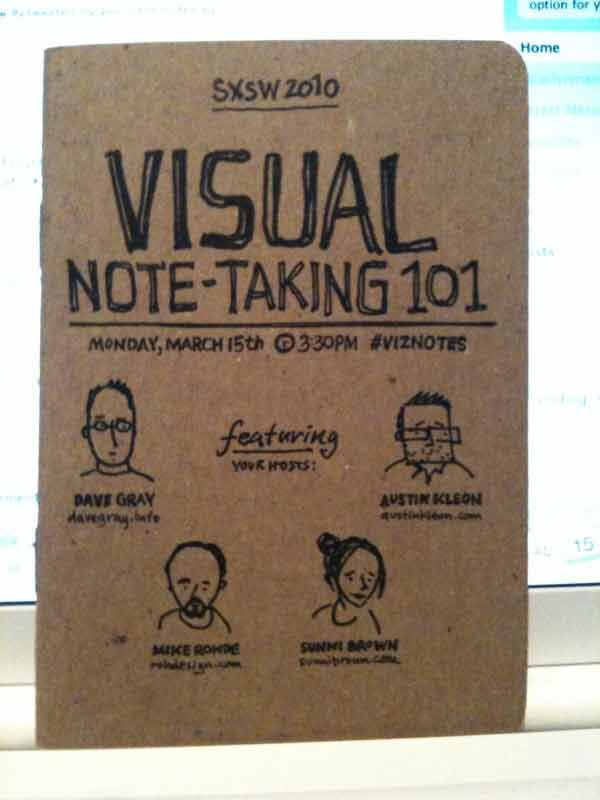 Austin Kleon, Sunni Brown, Mike Rohde and Dave Gray like to draw, and they like to share information. They combine their passions into something called visual note-taking. Some might find visual note-taking daunting, but these four break it down to make it not so scary. And in typical visual note-taker fashion, the session was mostly visual.
Austin Kleon, Sunni Brown, Mike Rohde and Dave Gray like to draw, and they like to share information. They combine their passions into something called visual note-taking. Some might find visual note-taking daunting, but these four break it down to make it not so scary. And in typical visual note-taker fashion, the session was mostly visual.
Brown went through some of the fundamentals of visual note-taking:
- Letters (Rodhe recommended to just “go with the flow” and go with what appears on the page)
- Bullets (As Kleon says, “Bullets aren’t for guns, they’re for sketch notes”)
- Frames
- Connectors
- Shadows
- People
Gray taught the audience how to properly draw people. To begin, you should start with the trunk or body, and then draw the ground. Next, connect the two; add legs. Continue with the arms, and last, the head. Before you know it, you have a person. Kleon wrapped up the panel by explaining how to draw emotions.
Draw what you observe, hear and feel. Keep things simple and don’t over analyze what you’re drawing. Overall, have fun with it.

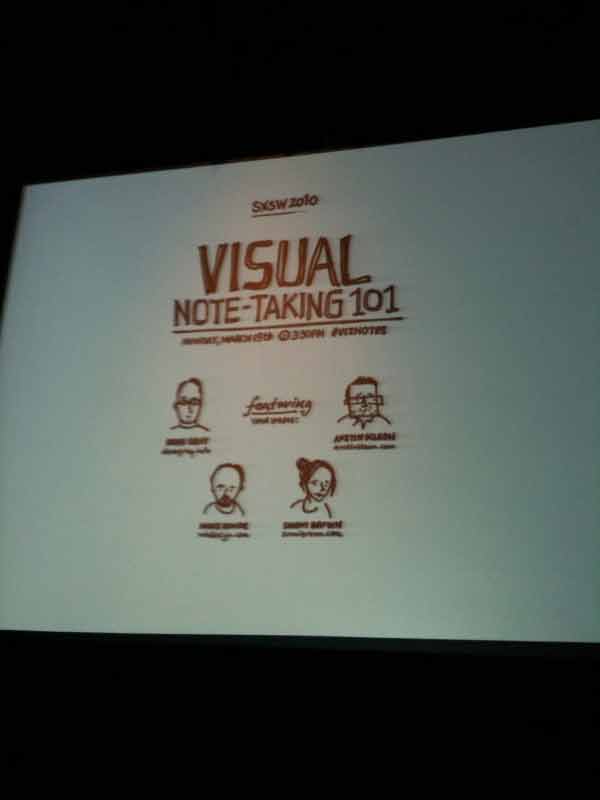
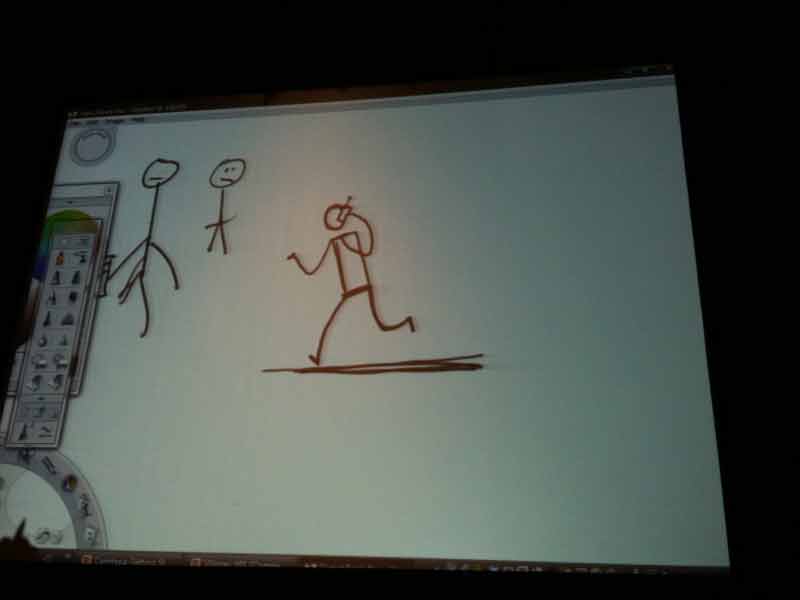
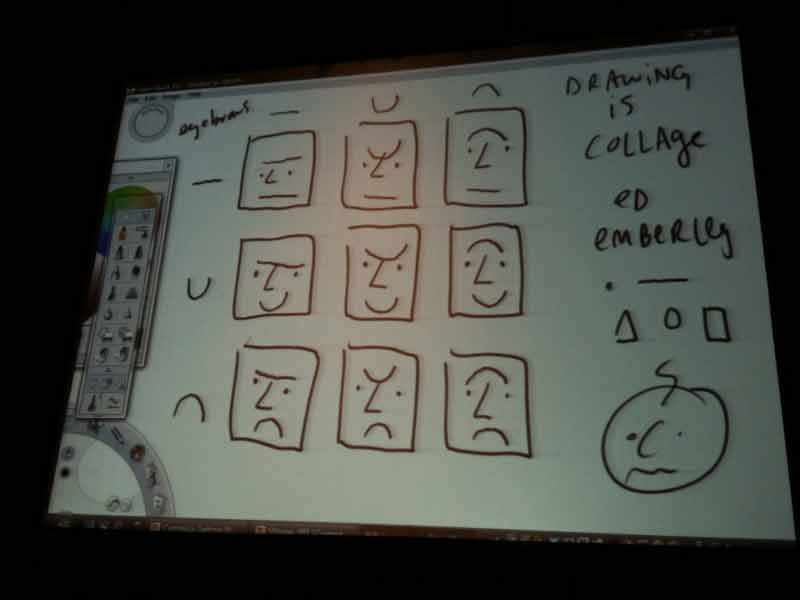
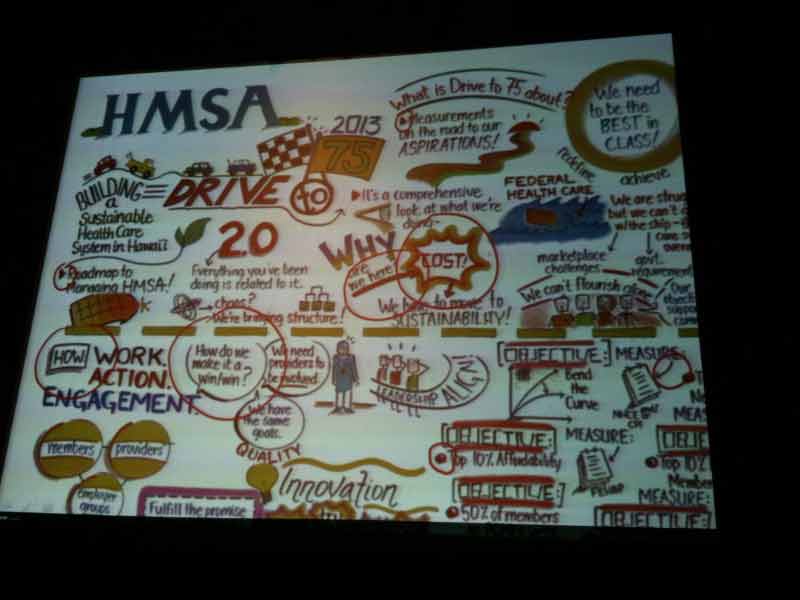
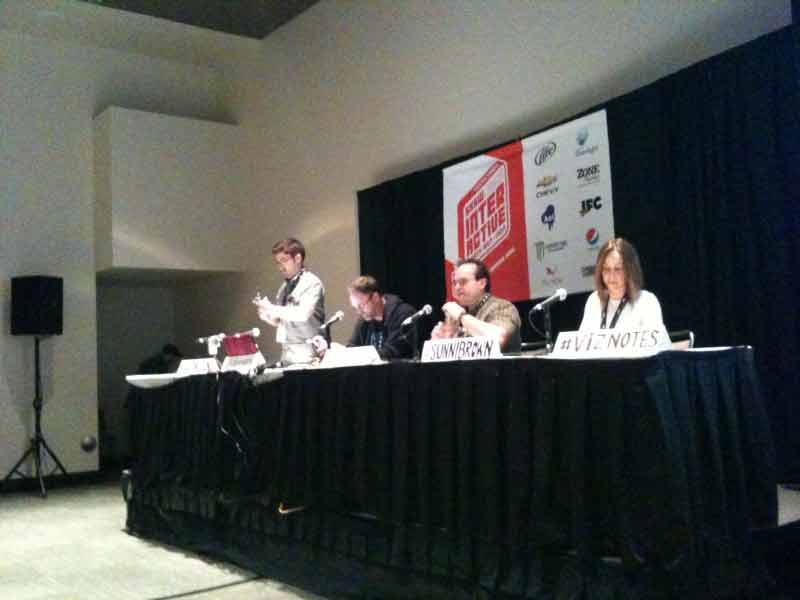
Permalink
Visual note taking is a good idea for those who use everything with a visual perception. I always tend to use Visual Note taking sometimes because it tends to make things more clearer for me just because it give a better understanding and its a fun thing to do. The only bad thing about Visual note taking is sometimes its hard to remember what each picture means.
Permalink
Also, adding to what I stated above, Visual Note taking could be a good thing or a bad thing. Depending on how you use it can help better note taking skills! Just make sure its understandable. Like I always say, have fun with it and make sure you take GOOD NOTES! =)
Permalink
I agree Ereka. I think Visual Notetaking is fun, but it has to be understandable. Without clarity, creativity, and legibility, your doodles will end up like noodles. I like the picture of the chart with the multiple expressions and how to make these different emotions with a simple change of the mouth and the eyebrows. I think this was a great session.
Permalink
Hello all,
Sunni Brown here – I was reading through the comments and thought it would be helpful for me to clarify something: visual notetaking is virtually never a bad thing. As Abram mentioned, clarity, creativity and legibility are good to have, but counterintuitively, it’s not the end product that is so hugely important. It’s the process of creating the notes. Cognitive science has shown time and again that our brain is engaged significantly more – in synthesis and retention – when we are in a “doodle state.” Meaning that even if we produce images that look like “noodles” or even if we can’t recall what they meant, it’s the ACT of engaging more of your whole brain that serves the learning process. And we recommend using words + pictures so you can avoid the challenge of not remembering what pictures mean. Labels, figures, numbers and equations are all part of visual notetaking. But again, it’s the process that’s powerful. Your cerebral cortex goes nuts when you start to draw – and it doesn’t matter who you are or how good you are at drawing. 🙂
Permalink
Wow, after reading Sunni Brown’s comment, I must say it does make more sense. I am such a “doodler” and will draw things in the column all the time, but I’ve never really tied it into my notes. I know that sounds horrible, me actually spending more time in the columns drawing pretty flowers and swirlies rather than pay attention to the professor. But, that’s just it! Some classes are just so dull, I have to doodle to get me through it.
Some times I will make bubble letters for key words when I’m taking notes, but I think visually it just brings it in all together. I definitely will have to give this a shot and add little emicons or something to go along with the notes, so I’m not completely wasting away my time in class. It’s a very interesting concept. –Kinzey Patton
Permalink
Kinzey,
You got it. Now get to it. 🙂
Permalink
For me it depends why I am taking the notes. Sometimes I want to remember the points that are being discussed or taught, but more often it’s the tangents where the great stuff happens for me. By tangents I mean the the thoughts and ideas that are triggered by the discussion, which may seem unrelated but are important insights for me.
If someone were to look at my notes it would be hard to separate the ideas that came from the presenter from the ideas that came from my own head. They meld together into something that’s unique to me. Maybe this is what Sunni means when she says the brain is engaged in synthesis when we take visual notes.